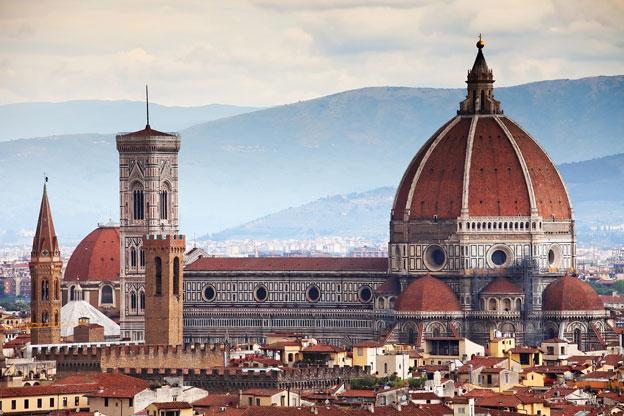John Bensalhia kicks off his look at the Italian Renaissance with a brief guide as to its origins, the main players and the schools of thought behind this cultural revolution.
THE BEGINNINGS
In theory, war and disaster should not have boded well for the introduction of the Italian Renaissance. The European economy was not in a good state of health in the 14th century. Recession was rife, and this was down to a number of factors. Trade routes were disrupted in north western Europe as a result of the 100 Years War between England and France. Furthermore, the expanding Ottoman Empire had caused war in the East, again disrupting trade routes.
By far the biggest tragedy was the Black Death, which killed countless people and cities in Italy. It is said that the once 45,000 strong population of Florence was reduced by between 25 and 50% in just under 50 years. Revolts and instability broke out, including rebellious Florentine textile workers, Ciompi, in 1378.
But out of this situation came the unthinkable. Those who had survived the terrible tragedy found that they could get wage increases owing to labour shortages. A new generation of people found that they had more money to spend on things such as art and books. This also coincided with a new breed of Italians who were scholars, poets, writers and thinkers. The dawn of the Renaissance era was about to be ushered in...

Above: "The Ideal City", painted between 1480 and 1490, author unknown - a symbol image of the Italian Renaissance
SCHOOLS OF THOUGHT
The Renaissance is regarded as the crossover from the medieval and early modern eras of Europe. Renaissance means “rebirth” and in 15th century Italy, there was about to be a rebirth in the way that people thought and regarded culture. Part of this was what was known as Humanism. Humanism emphasised a number of things – principally the target of individual achievements in various sectors and fields; appreciation of physical beauty (which was explored in books, poems and artwork) and the way in which man thought and behaved. The Humanism school of thought encouraged people to express their own thoughts and encourage their curiosity. Humanism meant that people were now questioning and challenging supposedly solid facts and schools of thought (such as in religion). Experimentation, independence and free thinking were now the orders of the day.
NOTABLE SECTORS OF THE RENAISSANCE
Practically all areas of culture were included in the Italian Renaissance. Paintings and sculptures. Literature and poetry. Music. Science. Architecture. And with a new emphasis on exploring new schools of thought, philosophy is one of the areas of the Renaissance that will be explored in greater detail. Overall, with such a hothouse of Italian culture, the country is regarded as one of the cornerstones of legendary works.

Above: The School of Athens, painted between 1509 and 1510 by Raphael, one of the greatest Renaissance artists
MAJOR PLAYERS OF THE RENAISSANCE
Many faces will be cropping up in the particular sectors of the Renaissance. The separate sectors of the Renaissance feature a number of major players. Here is a brief overview of some of the main names in the sectors.
Literature and poetry: Francesco Petrarch (an early Humanist advocate, scholar and poet); Giovanni Boccaccio (Humanist, author and poet); Niccolò Machiavelli (writer, historian, philosopher); Baldassarre Castiglione (author); Ludovico Ariosto (Poet)
Artists: Leonardo da Vinci; Michelangelo; Raphael; Piero della Francesca; Paolo Uccello
Musicians and Composers: Giovanni Pierluigi da Palestrina; Andrea Gabrieli; Bernardo Pisano
Architects: Leon Battista Alberti; Donato Bramante; Andrea Ciccione; Andrea Palladio

The Vitruvian Man - a drawing created by Renaissance genius Leonardo da Vinci circa 1490
THE LAST YEARS
By the end of the 15th century, events began to signify the end of the Renaissance. In 1494, the French invaded Italy, taking their land. This was to preempt a turbulent time in the first half of the next century.
The Sack of Rome, in 1527, saw a Spanish-Imperial victory. With Holy Roman Emperor Charles V crushed and defeated, the economy was once again in disarray, with economic restrictions placed on Italian states. Furthermore, the censorship of the Catholic church led to the Reformation movement, which left a huge void in the heart and soul and movement of the Renaissance.
By 1545, the Council of Trent had officially set up the Roman Inquisition. This was a new age, worlds apart from the previous free-thinking climate in which humanism was now judged as heresy. As the 1500s drew to a close, so too did the Renaissance, closing a chapter on one of the best-known eras of culture and learning.









